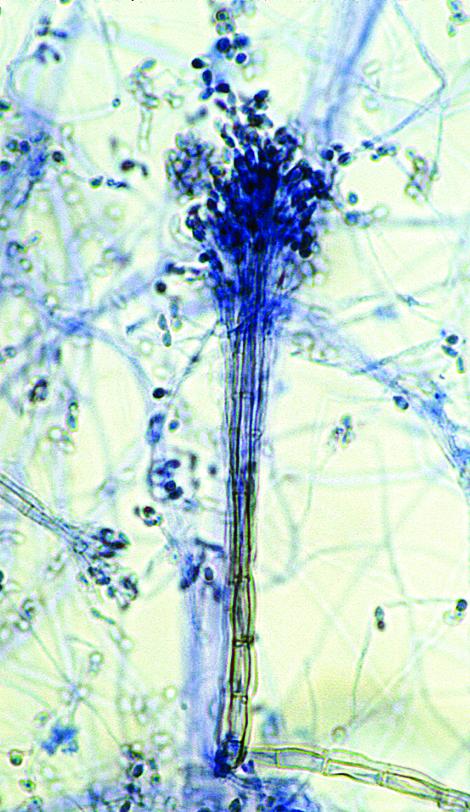Graphium
The genus Graphium is characterised by the formation of synnemata which consist of a more or less compact group of erect conidiophores that are cemented together, usually splaying out and bearing conidia at the apex.

Synnemata and conidia of Graphium spp.
Graphium species are commonly found on woody plant material. Graphium basitruncatum has been reported as causing fungaemia in an immunosuppressed child post stem-cell transplantation (El Feghaly et al. 2012).
Note: Many other fungi such as Scedosporium species may also produce synnemata.
RG-1 organism.
Morphological description:
Synnemata are darkly pigmented, erect and occur solitarily or in clusters. Conidia are hyaline, one-celled, smooth, subglobose to ovoid and are usually aggregated in slimy heads at the apex of the synnemata. Colonies are effuse, grey, olivaceous brown or black.
Molecular diagnostics:
The genus is phylogenetically close to Scedosporium but ITS sequencing can be used to resolve all species (Okada et al. 2000, Lackner and de Hoog 2011).
Key features:
Dematiaceous hyphomycete producing erect synnemata with apical aggregates of single-celled conidia in slimy heads.
References:
Barron (1968), Ellis (1971), McGinnis (1980), de Hoog et al. (2000, 2015).
